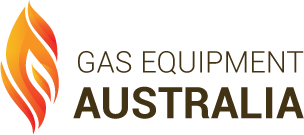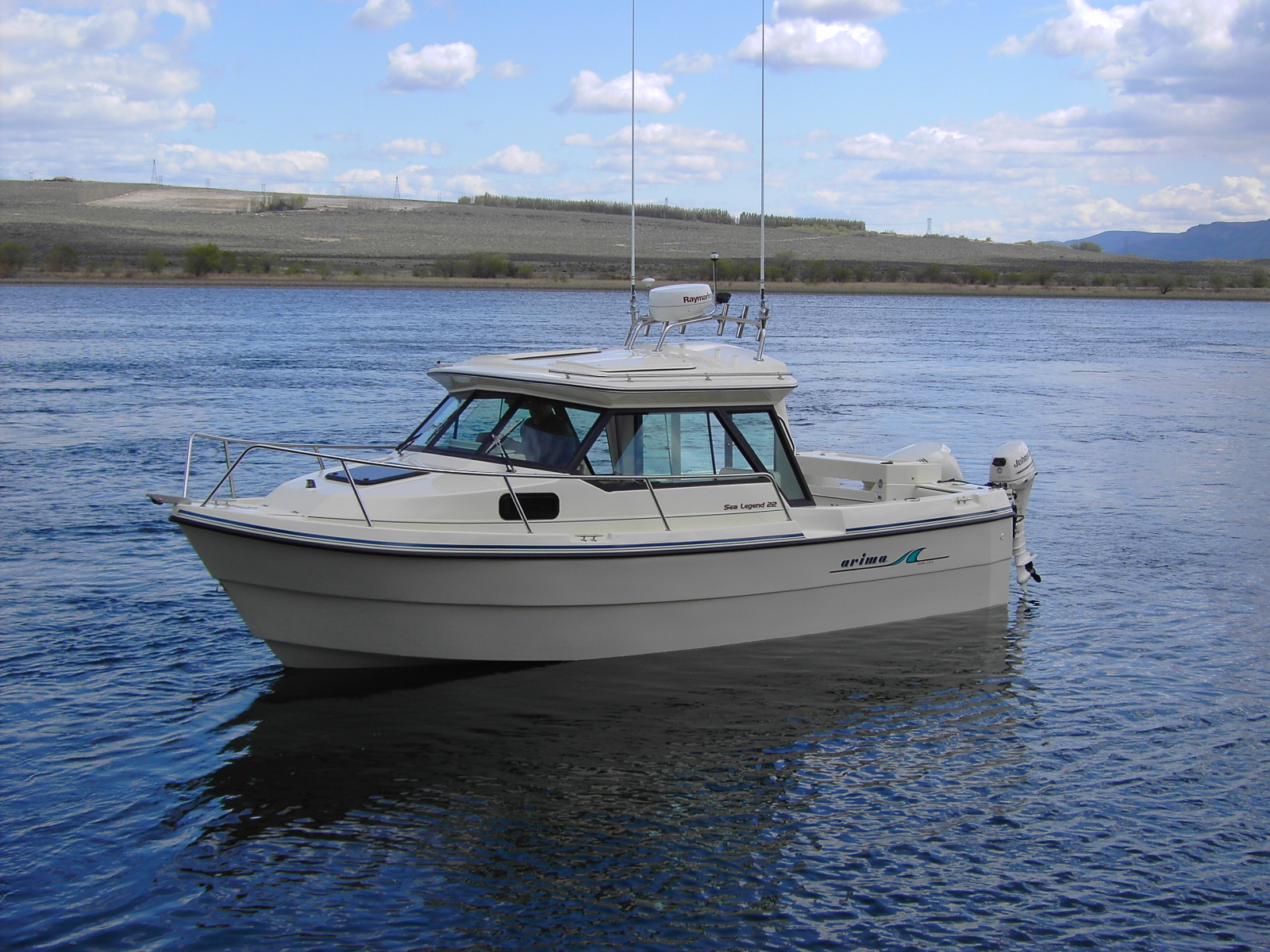6 essential questions to answer before installing LP Gas on a boat
- Where can gas cylinders be stored on a boat?
- Which requirements does a cylinder compartment or locker on a boat have to fulfil?
- Can I use insitu cylinders on a boat?
- Which gas installations are prohibited on a boat?
- Which regulators can I use for a gas installation on a boat?
- How should I test if my gas pipe is leaking?
To prevent gas accidents make sure all gas installations are installed by a certified and experienced gas plumber or gas fitter. There are a lot of things to consider when brining gas on board of a boat. The following blogpost is based on the “Australian/New Zealand Standard™ Gas installations Part 2: LP Gas installations in caravans and boats for non-propulsive purposes AS/NZS 5601.2:2013” but only considers Australia.
In general a gas installation is only in a ventilated area permitted and should never be installed in a location where it may ignite flammable vapours, materials or chemicals that can cause corrosion or malfunction of the appliance. Dangerous liquids can be some cleaning solvents and chemicals used in dry-cleaning processes.
Where can gas cylinders be stored on a boat?
Upfront LP gas cylinders are not allowed to be stored inside a boat.
LP Gas Cylinders can be stored on a boat
- In a cylinder compartment or
- on the cabin top deck of a boat or
- mounted externally on the upper deck. In this case the cylinder has to be more than one metre away from any opening into the boat, 150 mm away from any opening into the boat above the cylinder valve and 1500 mm away from any ignition source.
Also cylinders have to be protected from any heat source if closer than 200mm to the heat source.
Be aware that the storage for unconnected cylinders is the same as for connected cylinders.
Which requirements does a cylinder compartment or locker on a boat have to fulfil?
- No more than two 15kg gas cylinders are allowed inside the LP Gas compartment
- The compartment should face away any openings
- The bottom edge of the door opening has to be no less than 100 mm above the compartment floor
- Surrounded by water the compartment has to be water and corrosion resistant
- Always secure the cylinder in the compartment
- The compartment has to be sealed to prevent gas vapour from entering the boat
- The compartment has to be easily accessible and permit easy removal without the use from any tool. A key to secure the compartment is permitted.
- A drain above the water line has to be included to excess water easily
- The compartment should not face the direction of the travel
- Don’t store anything else than the cylinders or associated cylinder equipment in the compartment. Certainly not store any electrical equipment, batteries or ignition sources into the compartment. Except a non-sparking shut-off device. A sticker on the compartment has to inform about that
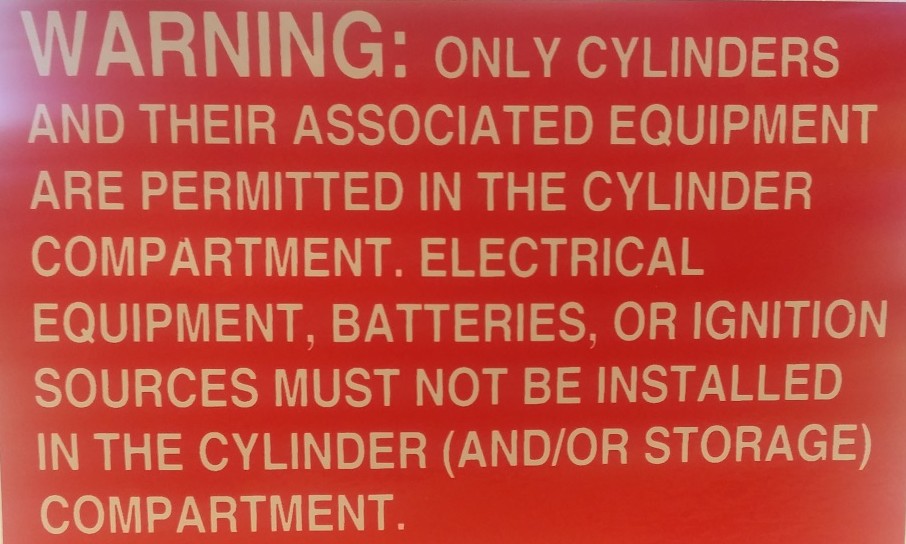
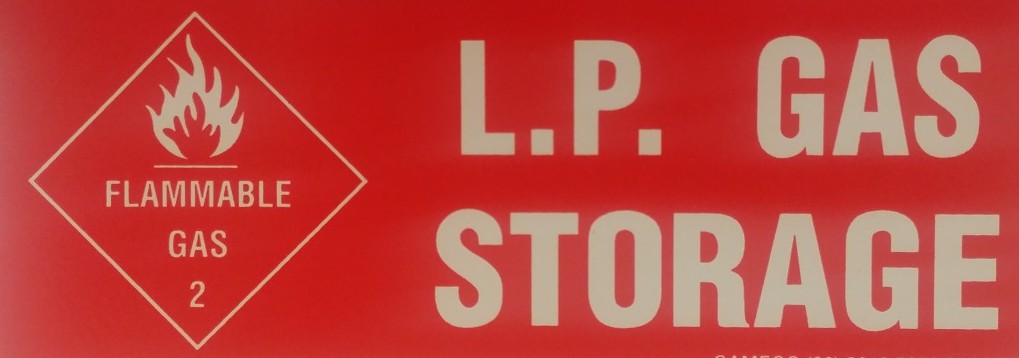
Can I use insitu cylinders on a boat?
The difference between an excess cylinder and an insitu cylinder is the way how cylinders can be refilled. An insitu cylinder can be filled up on site and doesn’t have to be removed from the area.
Insitu cylinders are not allowed on boats, except it can be shown that by its location or design LP Gas vapour cannot enter or accumulate in or on the boat and
- the cylinder does not require bleeding or venting to determine correct fill level
- liquid LP Gas is prevented from entering the appliance service line
- The cylinder and fill point are protected from accidental damage by their location or are enclosed in a locker and
- any leakage is directed away from any ignition sources and external to the boat
Which gas installations are prohibited on a boat?
Always make sure that your appliances are regulated and don’t exceed 2.75 kPa. Unregulated gas supply where the pressure is exceeding 2.75kPa are not allowed.
- Water heaters other than a room-sealed type are not allowed on a boat.
- Space heaters other than a room-sealed type are not allowed on a boat. A space heater in Australia can be permitted when the Technical Regulator contacted, as a flue less space heater in the living area of the houseboat where the area can be isolated from the sleeping area. For this exception the space heater has to be fitted with a flame safeguard, oxygen depletion device and a tilt safety switch. Be aware that the gas consumption of the heater is not to exceed 0.2 MJ/h for each cubic metre of room volume.
Which regulators can I use for a gas installation on a boat?
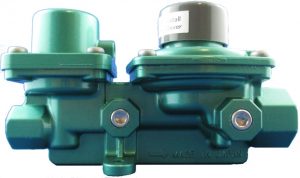
For the correct choice of a regulator you have to know how many MJ the connected appliances have, the inlet pressure from your connected LP Gas bottles and the required outlet pressure which is usually for appliances in Australia around 2.75kPa. The chosen regulator has to be Australian certified and preferable also UL listed. http://ul.com/aboutul/
Regulators on a boat have to be mounted directly on the structure of the boat and can be if required stored in the LP gas compartment. Make sure that the regulator is installed above the cylinder valve and protected from dirt and water.
How should I test if my gas pipe is leaking?
Never use a naked flame to test your gas installation. Use externally a soap and water mix or a gas leak detector to check any leaks in the installation.
Make sure when using the soap and water option to test your gas on leaks to use a soap that doesn’t contain any ammonia and as this can cause cracking on brass. Make sure to rinse the tested fittings afterwards with fresh water to avoid any danger.
Also make sure with a voltage detector when cutting into a gas pipe that the pipe is not carrying any electricity.
Source: Australian/New Zealand Standard™ Gas installations Part 2: LP Gas installations in caravans and boats for non-propulsive purposes AS/NZS 5601.2:2013
